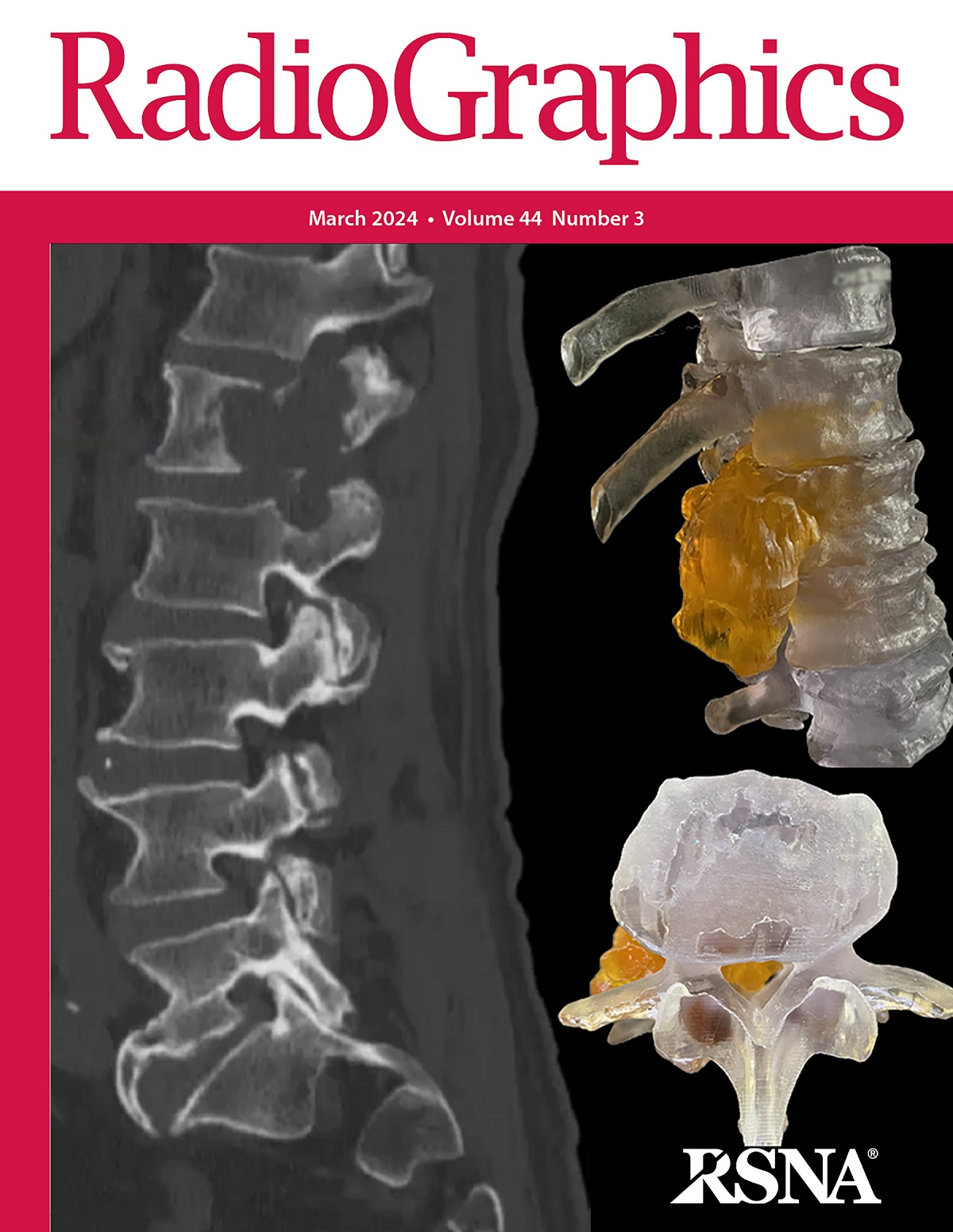求助PDF
{"title":"Unlocking the Temporomandibular Joint: CT, MRI, and Arthroscopic Correlation.","authors":"Silvia Cayón-Somacarrera, Rocío Gutiérrez-Rodríguez, Mario F Muñoz-Guerra, Francisco J Rodríguez-Campo, Verónica Escorial-Hernández, Elena M Ocón-Alonso","doi":"10.1148/rg.240025","DOIUrl":null,"url":null,"abstract":"<p><p>The temporomandibular joint constitutes a synovial connection between the mandible and the skull base and plays a pivotal role in functions such as jaw movement, chewing, and verbal and emotional expression. Temporomandibular joint dysfunction is observed in about 30% of the population, with a higher prevalence in young to middle-aged women. Interestingly, a majority of individuals affected do not report pain, and only 5%-10% of symptomatic cases necessitate therapeutic intervention. The most common temporomandibular joint disorder manifests as pain in the masticatory muscles and is referred to as myofascial syndrome. However, articular disorders are also very common, usually due to disk displacement and degenerative or inflammatory arthropathies. Less frequently, the temporomandibular joint may be affected by a range of congenital and acquired conditions such as trauma and neoplasms. Imaging becomes necessary for the small percentage of patients who do not respond to conservative management or when there is uncertainty in the diagnosis. A comprehensive understanding of the normal imaging appearance of the temporomandibular joint as well as the wide range of potential pathologic conditions is essential for conducting an accurate radiologic assessment. Moreover, collaboration among multidisciplinary teams and the correlation of imaging findings with arthroscopic observations are crucial to advancing the diagnosis and treatment of temporomandibular joint dysfunction. <sup>©</sup>RSNA, 2024 Supplemental material is available for this article.</p>","PeriodicalId":54512,"journal":{"name":"Radiographics","volume":"44 10","pages":"e240025"},"PeriodicalIF":5.2000,"publicationDate":"2024-10-01","publicationTypes":"Journal Article","fieldsOfStudy":null,"isOpenAccess":false,"openAccessPdf":"","citationCount":"0","resultStr":null,"platform":"Semanticscholar","paperid":null,"PeriodicalName":"Radiographics","FirstCategoryId":"3","ListUrlMain":"https://doi.org/10.1148/rg.240025","RegionNum":1,"RegionCategory":"医学","ArticlePicture":[],"TitleCN":null,"AbstractTextCN":null,"PMCID":null,"EPubDate":"","PubModel":"","JCR":"Q1","JCRName":"RADIOLOGY, NUCLEAR MEDICINE & MEDICAL IMAGING","Score":null,"Total":0}
引用次数: 0
引用
批量引用
Abstract
The temporomandibular joint constitutes a synovial connection between the mandible and the skull base and plays a pivotal role in functions such as jaw movement, chewing, and verbal and emotional expression. Temporomandibular joint dysfunction is observed in about 30% of the population, with a higher prevalence in young to middle-aged women. Interestingly, a majority of individuals affected do not report pain, and only 5%-10% of symptomatic cases necessitate therapeutic intervention. The most common temporomandibular joint disorder manifests as pain in the masticatory muscles and is referred to as myofascial syndrome. However, articular disorders are also very common, usually due to disk displacement and degenerative or inflammatory arthropathies. Less frequently, the temporomandibular joint may be affected by a range of congenital and acquired conditions such as trauma and neoplasms. Imaging becomes necessary for the small percentage of patients who do not respond to conservative management or when there is uncertainty in the diagnosis. A comprehensive understanding of the normal imaging appearance of the temporomandibular joint as well as the wide range of potential pathologic conditions is essential for conducting an accurate radiologic assessment. Moreover, collaboration among multidisciplinary teams and the correlation of imaging findings with arthroscopic observations are crucial to advancing the diagnosis and treatment of temporomandibular joint dysfunction. © RSNA, 2024 Supplemental material is available for this article.
揭开颞下颌关节的神秘面纱:CT、MRI 和关节镜相关性。
颞下颌关节是下颌骨和颅底之间的滑膜连接,在下颌运动、咀嚼、语言和情感表达等功能中起着关键作用。颞下颌关节功能障碍的发病率约占总人口的 30%,其中中青年女性的发病率较高。有趣的是,大多数受影响的人并不报告疼痛,只有 5%-10%的无症状病例需要进行治疗干预。最常见的颞下颌关节紊乱表现为咀嚼肌疼痛,被称为肌筋膜综合征。不过,关节紊乱也很常见,通常是由于椎间盘移位、退行性或炎症性关节病引起的。颞下颌关节可能会受到一系列先天性和后天性疾病(如外伤和肿瘤)的影响,但这种情况并不常见。对于少数保守治疗无效或诊断不明确的患者,进行影像学检查是必要的。全面了解颞下颌关节的正常影像学表现以及各种潜在的病理情况对于进行准确的放射学评估至关重要。此外,多学科团队之间的合作以及影像学检查结果与关节镜观察结果之间的关联对于推进颞下颌关节功能障碍的诊断和治疗至关重要。©RSNA,2024 本文有补充材料。
本文章由计算机程序翻译,如有差异,请以英文原文为准。


